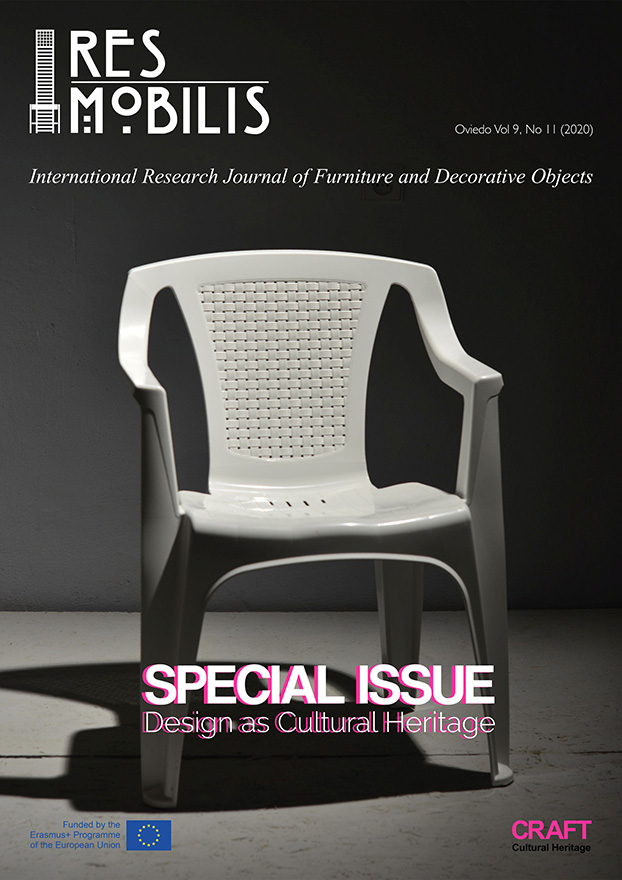Abstract
Nikolaus Pevsner’s Pioneers of Modern Movement is considered the foundational text of two new historical fields, the history of modern architecture and the history of design. This contribution, nevertheless, discusses this text in the context of art-historical discipline. Pevsner himself namely understood his work as a complement to Kunstgeschichte: by defining the ‘Modern Movement’ in established art-historical terms and also by discussing not only architecture but attempting to define the style and the worldview expressed in it for the whole period and all of visual arts. Specifically, this contribution is interested in the place that Pevsner allocated to the design within his art-historical edifice, since inclusion of objects of everyday use within an art-historical study was not (and still is not) usual. For Pevsner, on the contrary, design (linked to architecture) turns out to be a key component of his narrative, even if not for aesthetic but rather for moral or social reasons.
References
Amery, Colin. “Nikolaus Pevsner’s ‘Pioneers of the Modern Movement’, 1936,” The Burlington Magazine 151, no. 1278 (2009), 617–619.
Dilnot, Clive. “The State of Design History. Part I: Mapping the Field,” Design Issues 1, no. 1 (1984), 4–23.
Crinson, Mark, and Williams, Richard J. The Architecture of Art History. A Historiography. London: Bloomsbury Visual Arts, 2019.
Engel, Ute. “ ‘Fit for its purpose’: Nikolaus Pevsner Argues for the Modern Movement,” Journal of Design History 28, no. 1 (2014), 15–32.
Engel, Ute. “The formation of Pevsner’s art history: Nikolaus Pevsner in Germany 1902–1935,” in Reassessing Nikolaus Pevsner, edited by Peter Draper, 29–55 (London and New York: Routledge, 2017).
Fallan, Kjetil. Design History. Understanding Theory and Method (London: Bloomsbury, 2010).
Games, Stephen. Pevsner – The Early Life. Germany and Art (London: Continuum, 2010).
Games, Stephen. Pevsner: The BBC Years. Listening to the Visual Arts (Farnham: Ashgate, 2015).
Harries, Susie. Nikolaus Pevsner. The Life (London: Pimlico, 2013).
Hartoonian, Gevork. The Mental Life of the Architectural Historian: Re-opening the Early Historiography of Modern Architecture Newcastle upon Tyne (Cambridge Scholars Publishing, 2011).
Hoekstra, Rixt. “History in the Making: The Creation of Pevsner’s Pioneers as Reconstructed from His Archives,” Getty Research Journal, no. 8 (2016), 135–146.
Kinross, Robin. “Herbert Read’s Art and Industry: a history,” Journal of Design History 1, no. 1 (1988), 35–50.
Madge, Pauline. “An Enquiry into Pevsner’s Enquiry,” Journal of Design History 1, no. 2 (1988), 113–126.
Margolin, Victor. “Design History or Design Studies: Subject Matter and Methods,” Design Issues 11, no. 1 (1995), 4–15.
Muthesius, Stefan. “Germannes, Englishness, Jewishness, scientificness, popularization?,” in Reassessing Nikolaus Pevsner, edited by Peter Draper (London and New York: Routledge, 2017), 57–69.
Naylor, Gillian. “Good design in British industry 1930–56,” in Reassessing Nikolaus Pevsner, edited by Peter Draper (London and New York: Routledge, 2017), 177–194.
Oléron Evans, Emilie. “Transposing the Zeitgeist? Nikolaus Pevsner between Kunstgeschichte and Art History,” Journal of Art Historiography, no. 11 (2014), 1–18.
Panofsky, Erwin. “The Ideological Antecedents of the Rolls-Royce Radiator,” Proceedings of the American Philosophical Society 107, no. 4 (1963), 273–288.
Payne, Alina. “Pioneers of the Modern Movement from William Morris to Walter Gropius by Nikolaus Pevsner,” Harvard Design Magazine, no. 16 (2002), 66–70.
Pevsner, Nikolaus. An Outline of European Architecture (London: John Murray, 1948).
Pevsner, Nikolaus. Pioneers of Modern Design. From William Morris to Walter Gropius (Harmondsworth: Penguin, 1960).
Pevsner, Nikolaus. The Sources of Modern Architecture and Design (London: Thames and Hudson, 1968).
Pevsner, Nikolaus. An Enquiry into Industrial Art in England (Cambridge: Cambridge University Press, 2010).
Read, Herbert. Art and Industry. The Principles of Industrial Design (London: Faber and Faber, 1934).
Riegl, Alois. Stilfragen. Grundlegungen zu einer Geschichte der Ornamentik (Berlin: Georg Siemens, 1893).
Riegl, Alois. Die Entstehung der Barockkunst in Rom (Vienna: Anton Schroll, 1908).
Riegl, Alois. Spätrömische Kunstindustrie nach den Funden in Österreich-Ungarn (Vienna: Österreichische Staatsdruckerei, 1927).
Riegl, Alois. Historische Grammatik der bildenden Künste (Graz and Köln: Hermann Böhlaus, 1966).
Riegl, Alois. Historical Grammar of the Visual Arts (New York: Zone Books, 2004).
Sunwoo, Irene. “Whose Design? MoMA and Pevsner’s Pioneers,” Getty Research Journal, no. 2 (2010), 69–82.
Tournikiotis, Panayotis. The Historiography of Modern Architecture (Cambridge: The MIT Press, 1999).
Walker, John A. Design History and the History of Design (London: Pluto Press, 1989).
Whyte, Iain Boyd. “Nikolaus Pevsner: art history, nation, and exile,” RIHA Journal 0075 (2013), 1–33, http://www.riha-journal.org/articles/2013/2013-oct-dec/whyte-pevsner. Accessed March 10, 2020.
Wölfflin, Heinrich. “Prolegomena zu einer Psychologie der Architektur” (1886), in Kleine Schriften (Basel: Schwabe, 1946) 44–45.
Wölfflin, Heinrich. Kunstgeschichtliche Grundbegriffe. Das Problem der Stilentwicklung in der neueren Kunst (München: Hugo Bruckmann, 1917).

